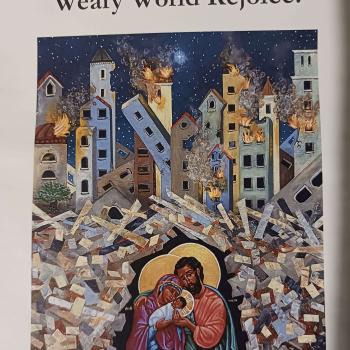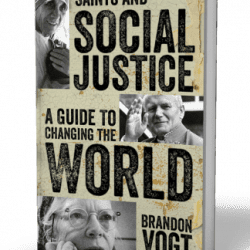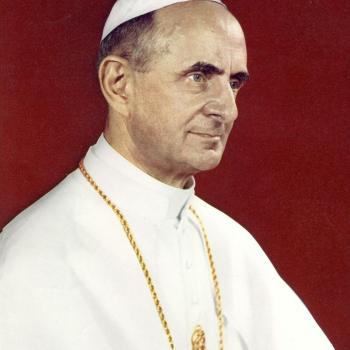It was a bright, sunny day in April 2005. Weeks away from my college graduation, I paid a visit to the office of a staff member who over the course of four years had become very dear to me. A scholar of Latin American liberation theology, Irene had organized some of the most memorable experiences of my university years. Thanks to her, I had spent time teaching ESL to recent Latin American immigrants in the New York City area, and I had also gone on a solidarity delegation to Nicaragua. Under her guidance, my eyes had been opened to some of the world’s harsh realities and to the possibility for change. However, despite interacting with Irene in a wide range of contexts on and off campus, I had never actually visited her office. When I stepped inside, I was startled by the sight of the poster that took up the greater part of her wall: an upside-down map of the world.
My first reaction was to laugh. It really was quite silly – Russia and Canada at the bottom of the world, Antarctica at the top. But, after surveying the world in this manner, I began to see that this humourous depiction of the globe had a serious intention.
All of us have implicit assumptions about how our world works. We learn these tacit premises at a young age and may not even be consciously aware of them until a sudden surprise (such as seeing an upside-down map) confronts us with a new perspective. For some of us, the idea that part of the world – at times called the First World – is industrialized, “developed” and modern, while other parts of the world – sometimes called the Second and Third Worlds – are “developing” and perhaps not so modern – is a basic premise many of us take for granted. It is reflected in our language and indeed in our maps. From the perspective of outer space, concepts like “up” and “down” don’t have the same meaning they do for those of on the ground. In the same way, dichotomies between “modern” and “premodern” become quickly confused when, travelling to Central America, one might meet people who live in modest, dirt-floored houses but own smartphones, or who might discover, as I did in my experience as a teacher, that young teenagers in Nicaragua have a much greater knowledge of current world events than their US counterparts.
In his 2000 essay “Modernity and Difference,”* Canadian Catholic philosopher Charles Taylor (perhaps known to some of you for his incredible 2007 tome A Secular Age) argues that the assumptions many of us in the wealthy parts of the world make about the rest of it are not well-founded. Modernity, which is often seen as a move toward societies organized around secularization, urbanization, capitalism, democratization and industrialization, cannot be understood without taking into account a central aspect of people’s lives: their culture. Taylor argues many theorists of modernity view it as a singular, one-size-fits-all process that any society might undergo. The “premodern” part of the world (the “developing” Third World) will be forced to become just like the “modern” part of the world (the “developed” First World).
This scenario might seem problematic for practical reasons, such as the fact that the typical level of consumption of people in the “First World” is not sustainable, and it remains unsustainable as it spreads to other regions. However, Taylor argues that it is also problematic because it does not reflect the reality of cultural diversity. Against the dominant model of “acultural modernity,” which sees modernization as a uniform process leading to convergence, Taylor speaks of “multiple modernities” – the idea that different societies change in their own way, creatively adapting new innovations to their own frameworks and traditions.
In Taylor’s own words, “The point of the “multiple modernities” thesis is that […] adaptations don’t have to and generally won’t be identical across civilizations. Something is indeed converging here, while other things diverge”(369). One example of this is the variety of business practices in different societies; another is in the relationship between religion and the public sphere: “Modern societies obviously differ greatly in the place they have for religion, and this is so even in states that are alike in espousing some variant of ‘secularism.’ What exists under this label in India […] is completely different from its counterpart in France or the USA” (370).
For me, Taylor’s thoughts on modernity strike a chord with my own journey of becoming more aware of the world and my place in it. As a child I was consistently told that my native United States of America was unquestionably the greatest country on earth. But as I grew older I began to see some of my nation’s weakneses alongside of its strengths; when I travelled abroad to Poland, Uruguay, Canada and elsewhere, I saw that each place I visited had its own strengths and weaknesses. As a teacher in Nicaragua, I wanted to help the people I was meeting; I soon learned that I could not expect to have any positive effect on them whatsoever without respectfully listening to their viewpoints and attempting to see the world from their perspective. (For a bold, polemical statement on the built-in arrogance of many charity workers, see Ivan Illich’s “To Hell With Good Intentions“).
I do not mean to discourage anyone from reaching out to help those who are genuinely in need – both at locally and globally. Indeed, in a world marked by stark inequality, working for social justice should be a top priority. As the prophet Micah urges us, we are called to “act with justice, love mercy and walk humbly with our God” (Micah 6:8). Following the examples of leaders from Mother Teresa to Dorothy Day to Pope Francis, many of us feel called to donate our money to international charities, or to sign petitions to free political prisoners, or perhaps to travel abroad on a solidarity delegation or mission trip. All of this is worthwhile – as Christians, charity is our vocation, and I would say that the more we can do, the better. But, what are the assumptions we bring with us as we carry out our charitable acts? Do we (perhaps) assume that helping others means changing them and their society to become more like us? Are we prepared to invest in them and learn about them rather than just giving them what we think they should want? Can we remember that “our” way is not necessarily the only way, and that modernity comes in many forms?
* Taylor, Charles. “Modernity and Difference.” In Without Guarantees: Studies in Honour of Stuart Hall. Edited by Paul Gilroy, Lawrence Grossberg and Angela McRobbie. New York: Verso, 2000, pages 364-374.










